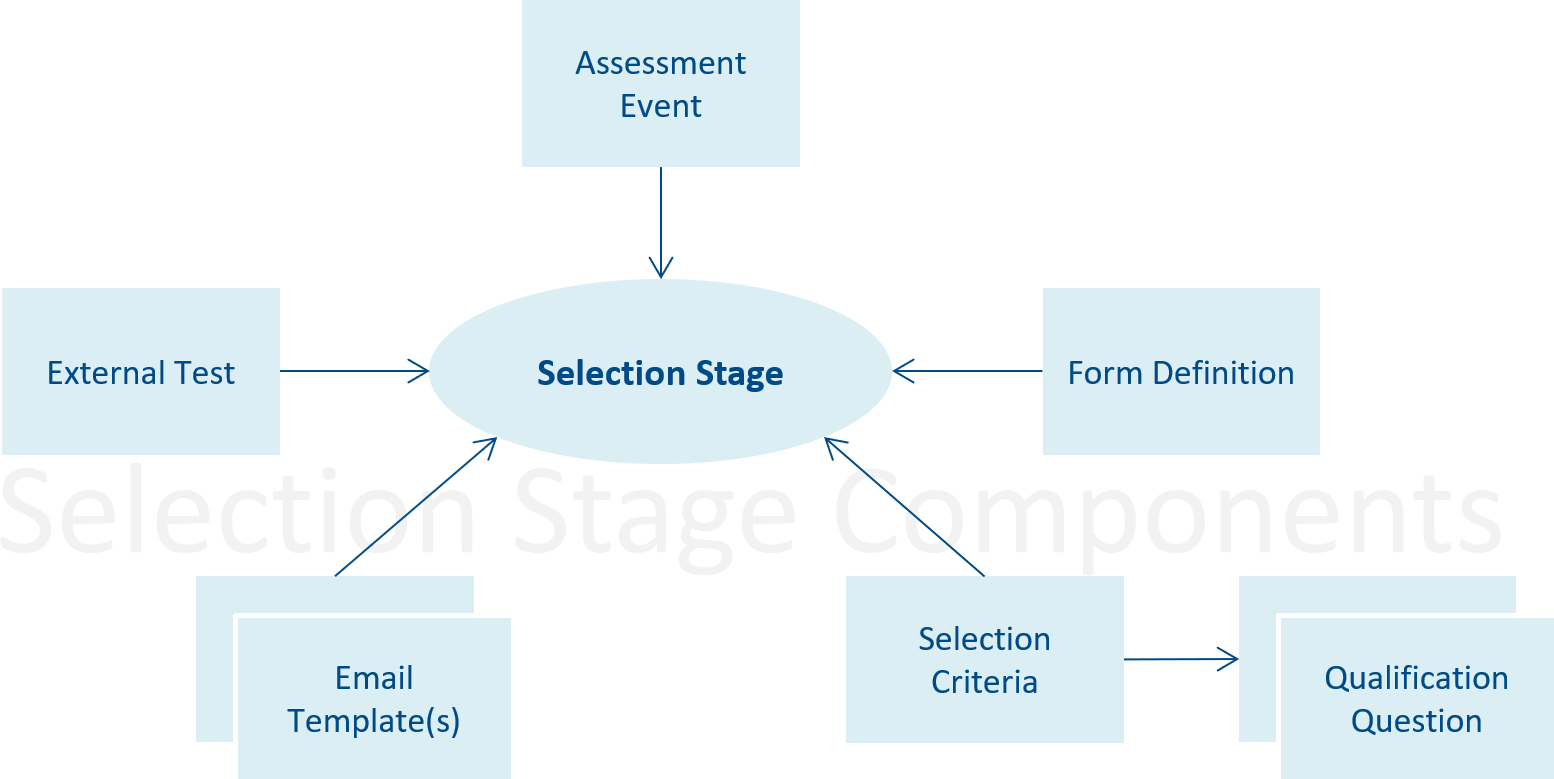Selection stages are the steps in the process to determine if candidates are suitable for hiring to fill a vacancy. Stages can be anything used to check a candidate or to decide between several candidates - for example:
- Checking details in the CV, resume or covering letter or email.
- Phone interview.
- One-on-one interview.
- Panel interview with collated or separate assessments of the candidate.
- An assessment center with a series of assessment events or exercises.
- Psychometrics or other personality tests.
- Tests of skill or knowledge by practical or written exam.
- Assessments by referees or people who know the candidate.
You choose the most appropriate stages to use for each vacancy. This enables you to add in more stages for important or critical hiring decisions, or to simplify and reduce the number of stages if a detailed process is not required.
If you anticipate receiving high numbers of applications - into the thousands - for a specific Vacancy, you are less likely to encounter system limits if you use fewer selection stages.
For example, shortlisting from a list of 5000 applications against each of 10 selection stages results in a query attempting to retrieve 50,000 records - the maximum number of records that can be retrieved in a single query. By reducing the number of selection stages to five you double the number of applications that can be processed in a single query to 10,000.
